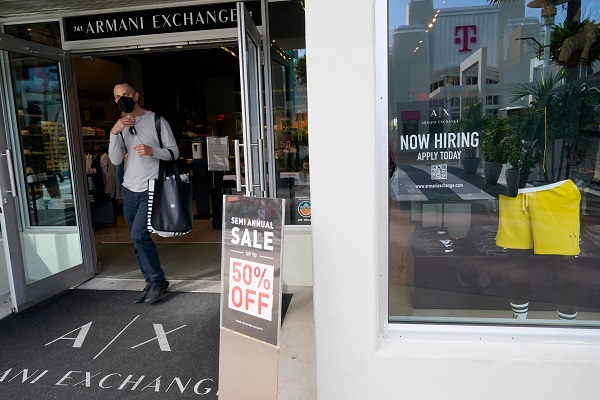On March 4, the Labor Department reported very strong employment numbers. In brief, the U.S. has benefitted from robust job growth for months. Specifically, 678,000 workers joined the workforce in February. This brings employment to levels achieved before COVID-19 began. The jobless rate declined to 3.8% — very close to the 50-year low of 3.5% reached in 2019. Assuming current rates of expansion, the number of employed people could surpass the rate achieved pre-pandemic.
To put these numbers in perspective, the unemployment rate one year ago was 6.2%. In April 2020, we suffered a post-World War II high of 14.7%.
Another positive indicator is the number of people who reported being unable to work because of COVID-19 fell by 1.8 million. Conversely, the percentage of people looking for work rose to 62.3%, only 1.1 % below pre-pandemic levels.
A preview of the post-pandemic labor market
President Biden highlighted our good fortune in his State of the Union address. He said, “COVID-19 need no longer control our lives.”
Daniel Zhao, senior economist at Glassdoor, said, “We are getting a preview of what the post-pandemic labor market can look like. The fundamentals of the labor market remain strong.”
The Wall Street Journal reported three shifts that could enhance job growth.
- The continuing decline in virus cases. Its vise grip on the economy may be loosening.
- Some states such as Washington, New York, California and Hawaii have lifted rules that required customers to be vaccinated and wear masks.
- Inflation (7.5%) has induced workers back into the labor force to cope with increases in the cost of living. The University of Pennsylvania estimated that 2021’s inflation will require the average U.S. household to spend around $3,500 more to achieve the same level of consumption of goods and services as in previous years.
The Wall Street Journal also reported the following: “Strong demand for hiring in such industries appears to be benefiting groups that typically have higher levels of unemployment. The unemployment rate for workers with no high school diploma fell to 4.3% last month, the lowest on records dating to 1992. The jobless rate for Black workers fell 0.3 percentage point to 6.6%, though the rate remained twice as high as white workers. The jobless rate for Hispanic workers fell half a percentage point to 4.4%.”
Although the number of COVID-19 infections has declined, many industries are still struggling to find workers. Job openings remain near all-time highs and workers continue to quit in record numbers in order to get higher-paying jobs.
The impact of war in Ukraine on Fed policy
Will these strong employment numbers impact Fed policy? Economists believe that the Fed needs to balance its fears about the impact of the war in Ukraine against the danger of our economy overheating.
Until the outbreak in Ukraine, experts projected the Fed to increase rates by 2% over the next 12 months. Speculation now centers around a 1% increase. Chairman Powell announced that he favors a 25-basis point increase in March.
Andrew Sorkin summed up our dilemma. He wrote in the New York Times, “Despite strong job numbers, polls show the public thinks the U.S. economy is headed in the wrong direction. The main culprit appears to be inflation … Now Russia’s invasion of Ukraine may prolong supply-chain issues and push up energy costs.”
Sadly, the world’s attempt to recover from COVID has been thwarted by Vladimir Putin. He started the Ukraine war because of his senseless quest to remake the Russian empire. Putin has threatened that he “will crush any country that stands in his way.” While the situation remains fluid, he appears not only to covet all of Ukraine, but NATO countries that were once in the Soviet empire. The Ukraine belligerency could trigger a global environmental disaster.
Originally published in the Sarasota Herald-Tribune




